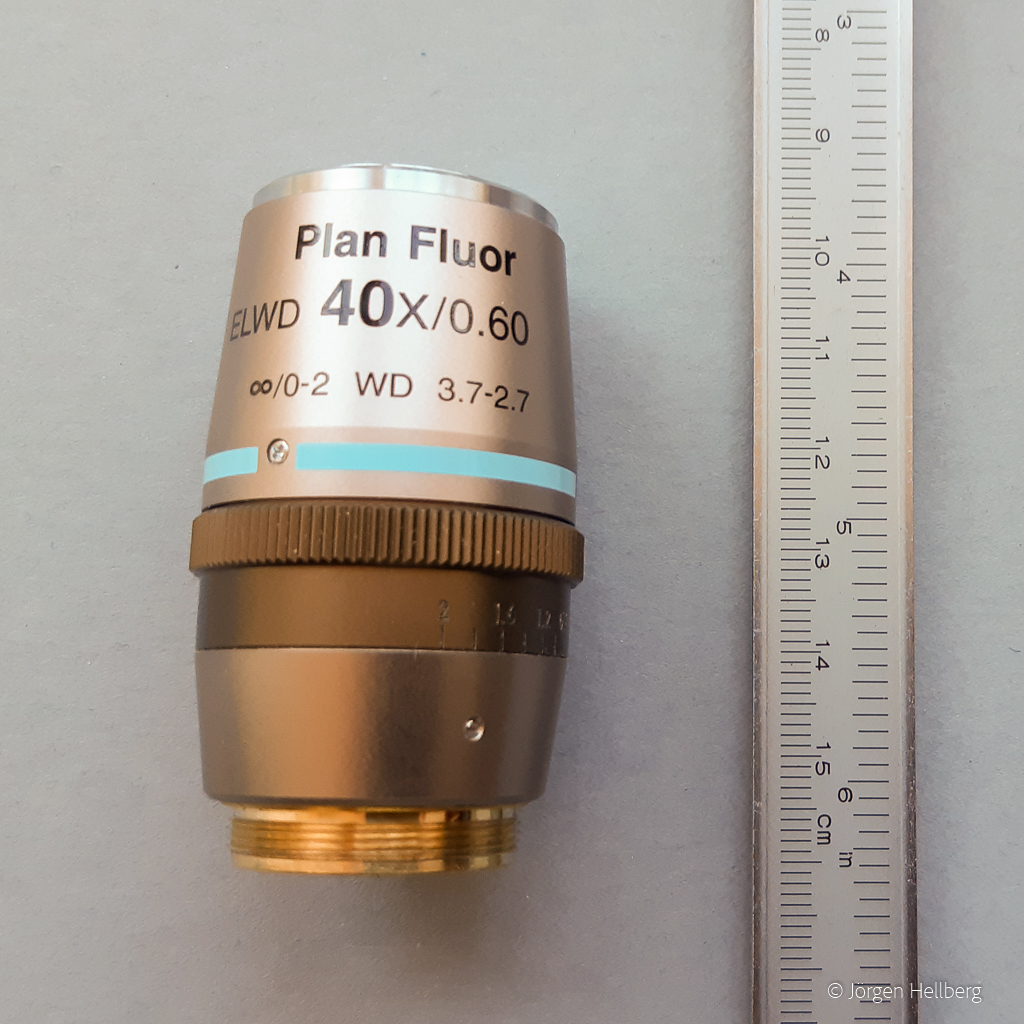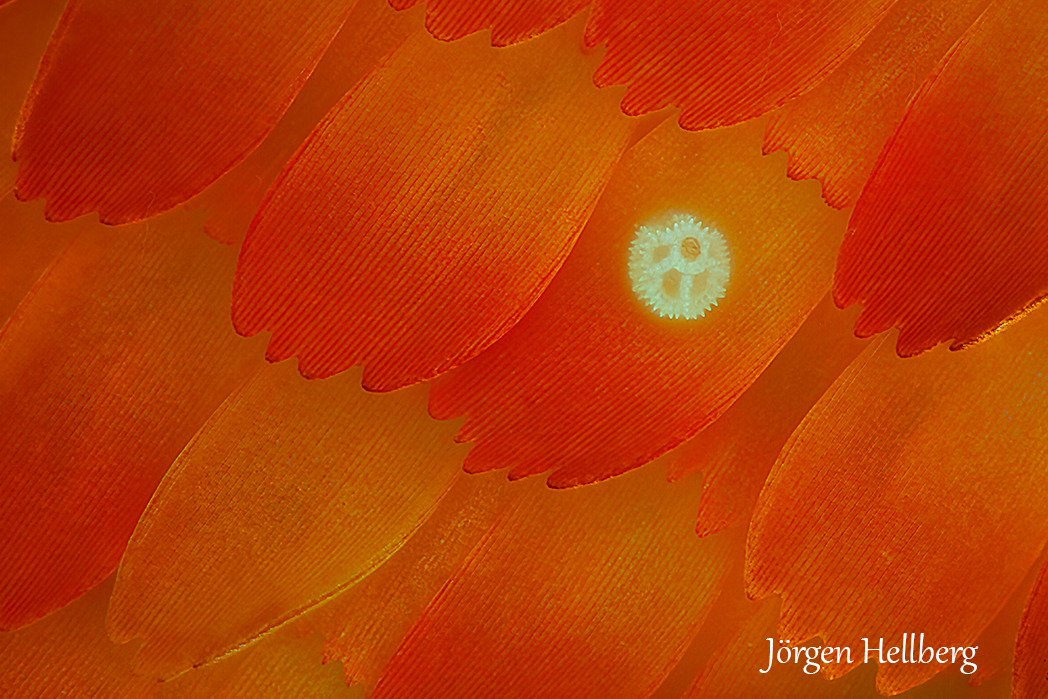Butterfly scales with a pollen grain


Yesterday and today I was using two different microscope objectives first an infinite Nikon 40x ELWD. This one has a correction collar that makes it useful for pictures with and without a coverslip. It can be adjusted for glass thickness from 0 to 2mm.
With this objective I made a stereo picture of a butterfly wing. Due to chromatic aberration there are some green and purple colouration that is not supposed to be there, but overall, I like the outcome. This objective has enough working distance (WD 3.7 – 2.7mm) to be used with diffused led light from the side. This gives the opportunity to control the light and to have some shadows. I took 72 pictures with a step size of 0.009mm, ISO 100 and 4 seconds exposure time. I used an ITL 200 as tube lens. I used Adobe Lightroom and Photoshop to process the photos and stacked them in Zerene Stacker.

The second microscope objective that I used was a finite Nikon M plan APO 40x objective with NA 0.8. The working distance for this lens is 0.7mm, and the butterfly wing that I was photographing this time was not as flat as the previous one, so it was difficult to use LED light. Instead I used the EPI light through the objective. This light is quite strong so the exposure time with ISO 100 was 1/20 second. Due to the higher NA I used a step size of 0.0004mm. After looking around on the butterfly wing I was lucky to find something that I did not expect – a pollen grain. This time I had to take more than 300 photos. Stacked in Zerene Stacker and processed with Lightroom and Photoshop. This is the result.

This is a cropped stereo of the picture above. I did some more processing in Photoshop that I do not usually do because a single picture looks over sharpened, but I did this to make the stereo “cleaner” to look at.

Link to EBAY Nikon 40x plan flour ELWD
Link to EBAY Nikon 40x M plan apo